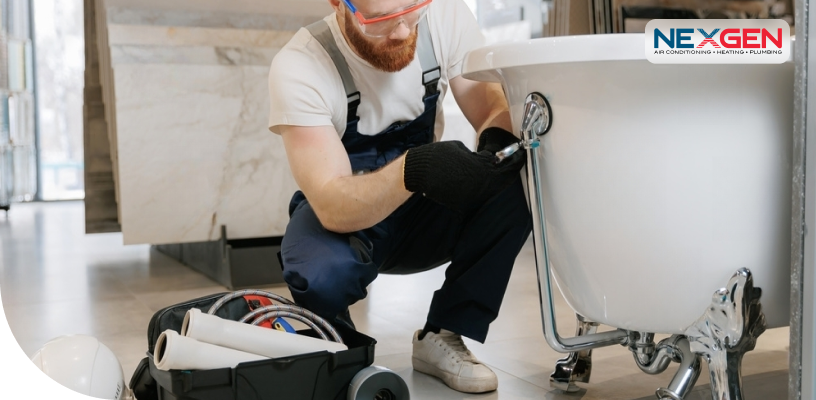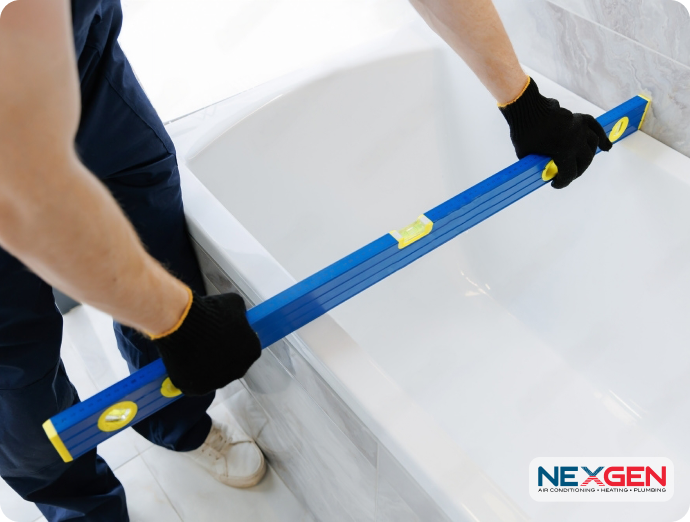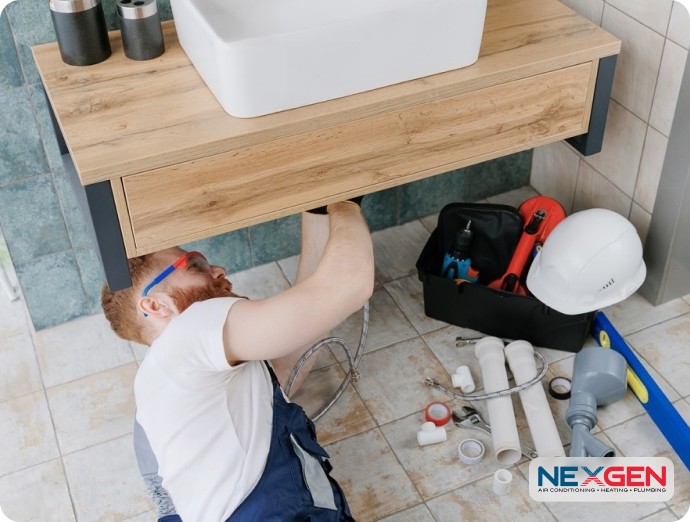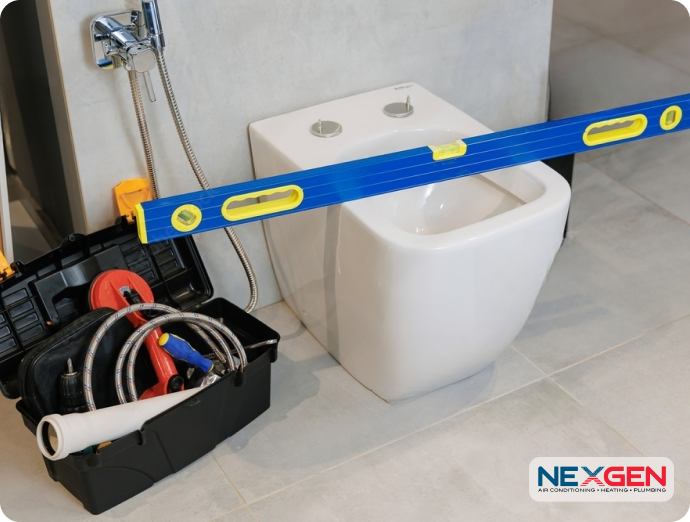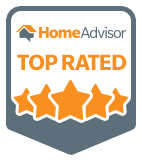A toilet has a more complex water supply and waste drainage system than other bathroom plumbing fixtures. Water is supplied to the tank every time you flush; it is stored until it’s required. The flush mechanism consists of a series of components to control the water level and fill the tank while venting maintains pressure to prevent a backflow of sewer gases.
Common toilet issues and their solutions include:
- The Toilet Flushes Slowly or Is Clogged: Plungers provide an easy way to unclog the toilet. But mineral deposits and stubborn blockages can require a plumbing snake to remove, which you’ll need a professional for. If you have an older toilet, they may recommend replacing it.
- Running Toilet: A toilet may run constantly if the flush valve is leaking. The problem may also occur if the fill valve is defective or improperly adjusted. A homeowner can repair these issues, as the risk of water damage is low, but calling a licensed plumber can ensure it’s done properly.
- Toilet Leak: A leak can do significant damage, considering the amount of water that goes through a toilet. It can originate from the pipe or hose that supplies the tank (the connection will need repair), where the tank connects to the bowl (requires replacing a gasket), or where the toilet sits on the floor (will require draining the tank, unbolting the bowl, and installing a new ring before replacing the bowl and tank).
- Toilet Overflow: An overflowing toilet usually has a blockage preventing the water flowing in from draining out. To stop an overflow, turn off the valve on the tank’s supply pipe. If there isn’t one, turn off your main water supply and call a plumber.
Our licensed and insured technicians provide emergency plumbing repairs, leak detection, pipe repair/replacement, and drain cleaning services. Customers in Los Angeles and Southern California can expect prompt, high-quality service, 24/7. No matter what kind of issue you’re having, we can resolve it quickly. For immediate service, competitive pricing, and a free estimate, call (805) 301-6788 today.








